Captured on film: Celebrating Karachi through a camera lens
Fourth International Karachi Conference kicks off at National Museum
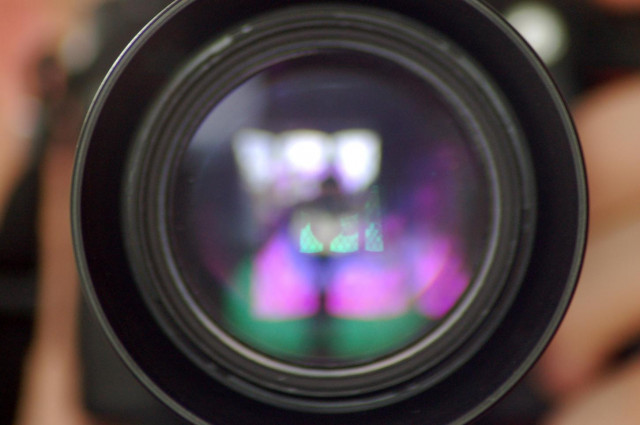
Today's cameras capture images measured in megapixels -- a million pixels -- normally between eight and 40 for an average consumer device.
For the past four years, the International Karachi Conference has done exactly that: highlight the importance of the city and all aspects of its urban existence for a better understanding of its role as a regional hub.
This year marks the fourth year the conference is being held. It kicked off on Friday at the National Museum with a film festival, showcasing 12 short films made by students and two non-student films. The festival was curated by Taimur Suri, Rumana Husain and Shabbir Siraj.
Up and coming : A new space for Karachi’s artists
All the films showed a different facet of life in Karachi. Travelling in G17 by Saadia Sarfaraz, Arsalan Tahir, Ali Raza and Zeeshan Shah from the University of Karachi (KU) revolved around local buses, whereas Of the Rulers by Syed Owais Ali from Pakistan Air Force -Karachi Institute of Economics and Technology showed the journey of a villager from Hakimwalla, Punjab, who travels to Dubai for work.
Lyari Beats by Cyrus Karanjia of the Shaheed Zulfikar Ali Bhutto Institute of Science and Technology (Szabist) told the story of a dance group from Lyari, Daya Ram by Shyan Ali from The School of Writing revolved around a poor boy's aspirations to study and become an engineer.
It is interesting to note that all the short films were non-fiction, with the exception of a music video, Paagal Hogaya by Komal Ghazali, Tahira Roohi and Soha Anwar from Szabist, and a fiction short film, Jhuley Lal by Hasan Hashmi from KU.
The screening was followed by a panel discussion featuring assistant professor at Habib University Dr Markus Heidingsfelder, assistant professor at the Institute of Business Administration Dr Naveen Zehra Minai and head of media sciences department at Iqra University Tehmina Lodhi.
"I could see the vested interest of the students, their passion [in the films]" said Minai. Heidingsfelder commented that he loved The Untouchable by Ali Rizvi and Lyari Beats. He called Lyari Beats the most 'technically perfect' out of all the films screened. Its director, Karanjia, who was present at the screening, was commended for telling a story that resonated with them all. Lodhi asked him about following up on his subjects and Karanjia told them of how the dance group in Lyari was now struggling with the closure of his cafe where they practiced.
Lodhi also commended Jhuley Lal for its screenplay, and said, "It had a brilliant screenplay and I think this is something we really need right now in our films".
This is the direction we must work towards, she added. Another film that was commended by the panellists was Paagal Hogaya - a David Lynch-esque surrealist music video, which was an analogy of our socio-political situation.
Heidingsfelder found it interesting that a lot of filmmakers explored stories in the poverty-ridden areas of Karachi. Suri pointed out that a lot of the students make films about themselves. "You might be surprised to know that a lot of filmmakers come from less affluent areas and then choose to make films about their surroundings," he added. Heidingsfelder said in the films, it was not just that cinema was used as a medium, but the city as well.
Promoting talent: Karachi Youth Festival starts from Saturday
Minai spoke about citizens exploring and understanding the space that they inhabit in Karachi. Lodhi said she found the films bold. "I liked the fact that the films didn't shy away from Karachi's dirtiness, our unworthiness. In a way, they took pride in it."
While all the films had powerful themes, Heidingsfelder said some of the films suffered from bad sound quality. Interestingly, Minai said what made some of the films more impactful was their bad sound. "It's very contradictory in nature, like when you see the teacher instructing Daya Ram and other students in an area surrounded by the urban imagery, and at one point, you hear traffic sounds and you can't focus on the dialogue, I think it creates more emotional impact," she asserted.
Published in The Express Tribune, December 10th, 2016.

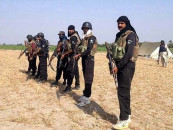
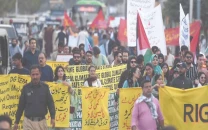
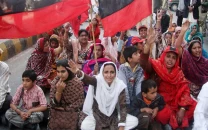
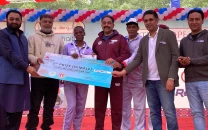
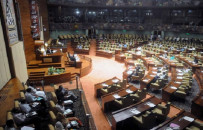













COMMENTS
Comments are moderated and generally will be posted if they are on-topic and not abusive.
For more information, please see our Comments FAQ